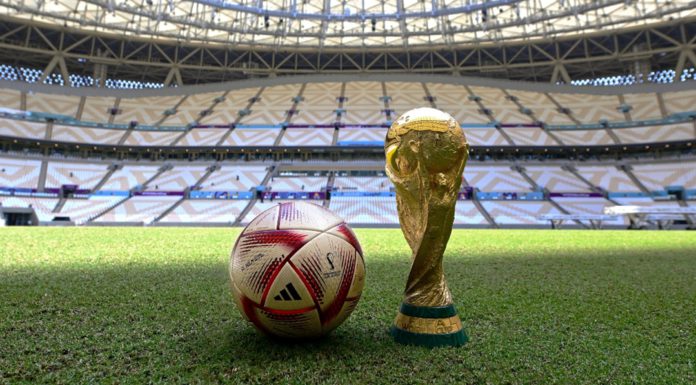On Sunday, adidas revealed Al Hilm – the official match ball for the semifinals and the final of the Fifa World Cup Qatar 2022.
Al Hilm, which translates as “The Dream” in Arabic, follows on from the official match ball used in the group stages, Al Rihla, meaning “The Journey”.
Both balls feature the same technology, engineered to support the highest game speeds as they travel faster in flight than any other World Cup ball.
Utilising the latest technological advances in ball design, Al Hilm includes the same ‘Connected Ball’ technology as Al Rihla, which has proven invaluable in helping match officials make faster and more accurate decisions during this World Cup.
Combined with player position data, the innovation offers Video Assistant Referees instant data, to help optimise decision-making for a seamless fan experience. By combining the ball tracking data captured by sensors within the ball and applying artificial intelligence, the new technology provides an automated offside alert to the VAR team.
Designed from the inside out using data from rigorous testing in adidas labs, wind tunnels, and on-pitch, Al Hilm features the same new panel shape and surface textures as Al Rihla, namely:
A CTR-CORE – An innovative core within the ball that is tuned to support fast, precise play with maximum shape and air retention
SPEEDSHELL – The ball’s polyurethane (PU) skin featuring micro and macro textures and a 20-piece panel shape
Al Hilm has a unique graphic design – set on a textured gold base colour and featuring a subtle triangular pattern, it draws inspiration from the sparkling deserts that surround the city, as well as the colour of the Fifa World Cup trophy and pattern of the Qatar flag. Bold red accents complement the graphic, reflecting both the architecture of Qatar and the country’s flag.
The ball encapsulates its namesake, Al Hilm – “The Dream”, as it connects to the twilight hours, where the red sky meets the desert sand at dusk – a time when dreams are set to come true under the floodlights of the Lusail Stadium – the stage for the Final.
The ball was designed with the environment at its heart and is the first World Cup ball used in the semifinals and final, made using water-based inks and glues.


